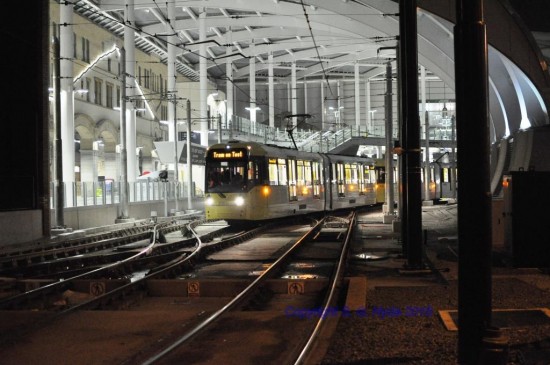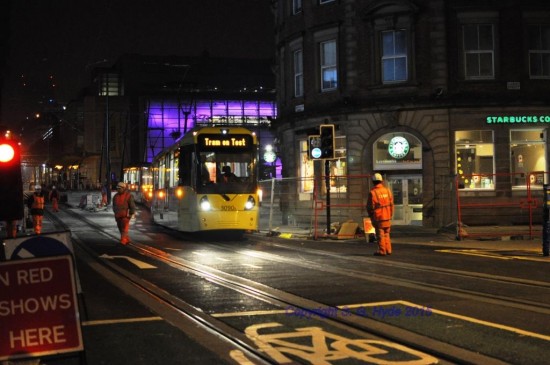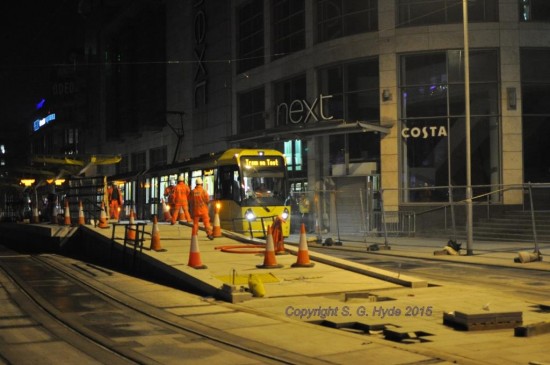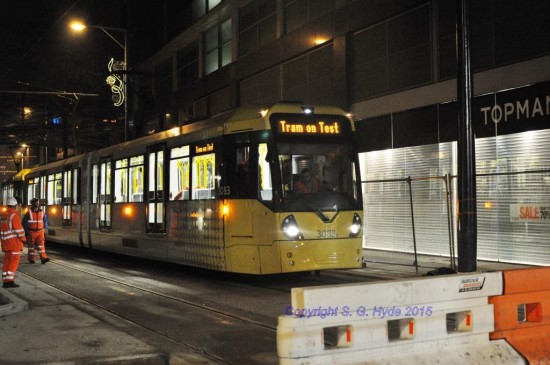As expected the early hours of Sunday 1st November saw the first tram movements on Manchester Metrolink’s Second City Crossing between Victoria and Exchange Square. M5000s 3083 and 3090 were chosen to perform the initial gauging run operating a successful return trip before heading back to depot. Further gauging and test runs will continue over the next few weeks before services start before Christmas. Photos courtesy of Steve Hyde.

3083 and 3090 pass over the junctions at Victoria onto the 2CC route - the first trams to make the move.

The double unit on its return trip leaving Exchange Square and crossing Withy Grove onto Corporation Street. (All Photographs by Steve Hyde)
* A gallery of further images from the start of testing on the Second City Crossing will follow on British Trams Online in the next few weeks.



While I applaud the opening of the first station on the 2CC,i cannot help thinking has this been brought about because of pressure on T.F.G.M from the major retailers in the area.Corporation street has been a building site for the last eighteen months and human nature being what it is,people don’t like walking through a building site to their shopping.
I think you may find that the EU regional development fund gave a time limit for this stage of 2cc due them part funding the extension. Further details can be found on the TfGM website if you search hard!
Slightly off topic, but at the bottom of King St the end of a section of old tram rail was visible.
Why is it that Manchester seem to have no problems expanding their network yet Liverpool had their planned system scrapped, Leeds had their plans turned down and Birmingham our “second city” struggle to build two very short extensions.
I think that the main reason is that in the Greater Manchester conurbation all the local authorities worked together through the auspices of the Association of Greater Manchester Authorities (AGMA) who were better able to present a co-ordinated approach through lobbying. The existence of that body is one of the reasons why there is now a Greater Manchester Combined Authority.
Other conurbations don’t seem to be able to agree priorities amongst the constituent authorities. It seems that each authority wants it’s own pet schemes to progress at the expense of everyone elses’s. I know that Merseytram suffered partly due to Knowsley and Liverpool being unable to agree routings and priorities. The final nail was that the government couldn’t accept assurances that funding shortfalls would be met locally.
Manchester area is the next largest urban area after London with 2.7 million and growing within GM and a further 1.5 million served by the city region.
Manchester had its phase 3 extension plans refused by the government, but they fought a strong campaign for a change of mind which succeeded. Metrolink also had their struggles with building the new extensions in the early days with more or less every job overrunning but now they seem to have got on top of it. After all, they have nowchad plenty of practice!